The best mirrorless camera for 2024: top picks for every budget
The best mirrorless cameras from Sony, Canon, Nikon and more
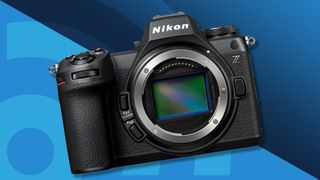
Beginner or professional: the best mirrorless cameras are the future of photography. Because we’ve reviewed hundreds of mirrorless cameras, we know how to tell the great from the good. Below, you’ll find a hand-picked selection of our favorites, covering everything from entry-level models, to mid-range hybrids, to full-frame flagships.
Based on our in-depth tests, the mirrorless camera we’d personally choose to shoot with is the Nikon Z6 III. Its build and abilities seriously impressed us in testing, including its assured handling, 6K video specs and precise subject detection autofocus. It’s one of the best Nikon cameras we’ve reviewed. That said, we know not everyone will need or be able to afford its features.
We've put together this guide to make it easy for you to find honest answers when choosing which mirrorless camera to buy. We’ve shot extensively with each model, to get a genuine, first-hand understanding of how it performs in real scenarios. We’ve summarized the results here, so that you know exactly why we’ve recommended each camera.
Top 3 picks
The summary below will give you an instant overview of the best mirrorless camera options for every photographer. When you find one that ticks the right boxes, you can follow the links beneath each entry to jump down to our full write-ups.
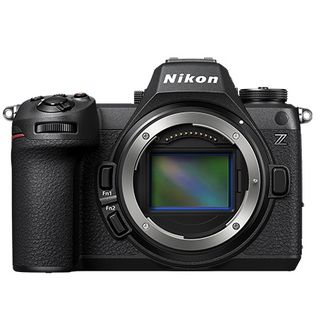
The best full-frame for most people
A superb blend of power and reliability for both photo and video creatives, the Z6 III excels in almost every situation.
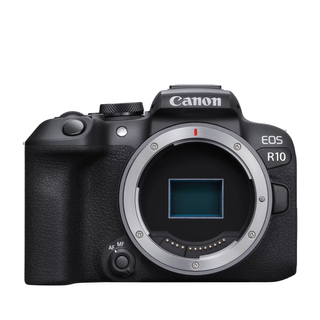
The best choice for beginners
With modern autofocus and good handling, the EOS R10 is a versatile mirrorless powerhouse that's perfectly suited for beginners.
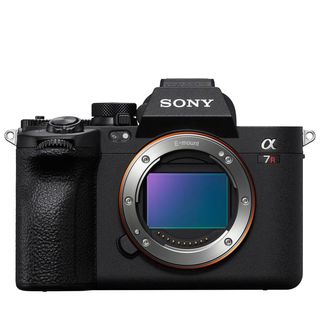
The best for pros
The A7R V has the same resolution as the A7R IV, but a new sensor and processing engine make it a better camera overall for pros.
Best by use-case
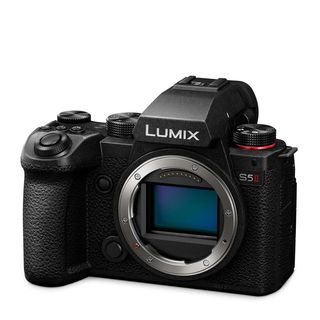
The best for video
Billed as a hybrid, the Lumix S5 II excels at video, producing rich and detailed 6K/30p footage while offering excellent bang for buck.
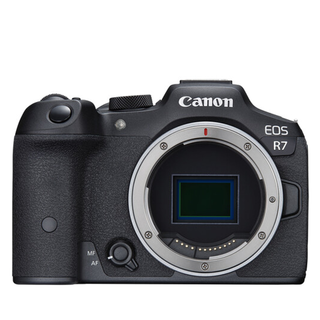
The best crop-sensor
The EOS R7 is like one of Canon's full-frame EOS R cameras, but with a smaller APS-C sensor. Impressively powerful for the price.
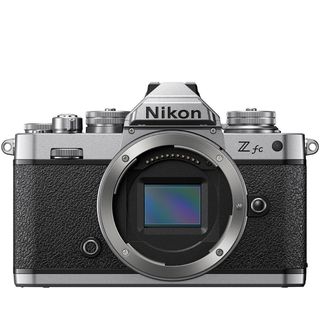
The best retro hybrid
A lovely retro hybrid, the Nikon Z fc is a great choice for casual shooters who want a fun camera for travel and everyday shooting.
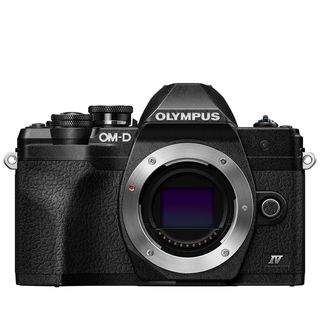
The best value for beginners
The E-M10 Mark IV might lack advanced features such as phase-detection autofocus, but is still a great value option for stills.
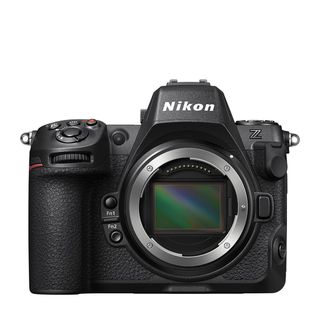
The best hybrid for pros
A smaller, cheaper version of the excellent Z9, the Nikon Z8 is one of the most capable hybrid cameras on the market right now.
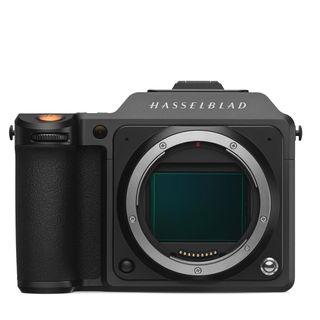
The best medium format
Very much a camera for purists, the X2D 100C is also the most versatile and accessible medium format Hasselblad made to date.
Load the next 2 products...
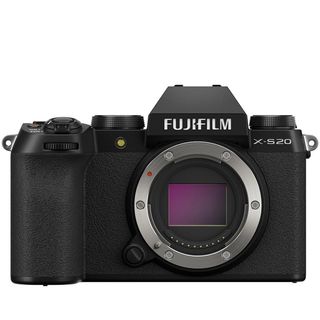
The best hybrid for beginners
Taking all that made the X-S10 great, the X-S20 adds beginner-friendly features while still satisfying more advanced users.
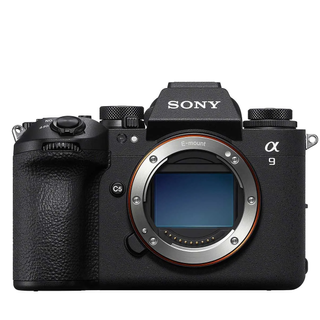
The best for action enthusiasts
An innovative camera for high-speed photography, the A9 III delivers blistering stills pace with unbeatable burst speeds.

Tim is TechRadar's Cameras Editor. With more than 15 years' experience as a photographer and tech journalist, Tim has shot with many of the best mirrorless cameras. As a result, he has a deep knowledge of what to look for when selecting a mirrorless camera. He notes, "with new models coming from Canon, Sony, Nikon, Fujifilm, Panasonic and more, the mirrorless camera market has never been healthier. From entry-level hybrids to high-res workhorses, competition is fierce across all categories. When putting together this list, we've tried to cater to every kind of photographer."
The best mirrorless cameras for 2024
Why you can trust TechRadar
Below you'll find full write-ups for each of the best mirrorless cameras in our list. We've tested each one extensively, so you can be sure that our recommendations can be trusted.
The best mirrorless camera overall





Specifications
Reasons to buy
Reasons to avoid
Nikon Z6 III sample images





✅ You shoot a lot of video: The Z6 III is a true all-rounder, however, many of its upgrades are video focused, including 6K up to 60fps and excellent color profiles.
✅ You photograph moving subjects: The Z6 III has much better subject detection autofocus than the Z6 II, and fast frame rates.
❌ You want the best detail: Nikon's 45MP cameras have almost twice the number of pixels as the Z6 III, giving you finer detail and better cropping capabilities.
❌ You want the best budget full-frame Nikon: Since the Z6 III launch, the Z6 II has gone down in price and is considerably cheaper.
Nikon's third-gen Z6 III is a significant upgrade from the Z6 II, giving it the edge over rivals like the Canon EOS R6 II. It's a mid-range all-rounder that ticked a lot of boxes in testing: you don't get best-in-class detail from its 24.5MP full-frame sensor, but we did appreciate the view through its best-ever EVF (a 5.76m-dot number). Burst speeds are rapid too, with up to 60fps at full resolution for JPEG. But it's the autofocus that really shone in our review: it's just about the best system in low light, while the latest subject detection modes proved suitably sticky.
The Z6 III's video specification also stands out. You get 6K video up to 60fps in-camera, and oversampled 4K raw, plus regular 4K at 120fps and 10x slow motion up to 240fps in Full HD. Record times are impressive too, at 120 minutes even without a cooling fan. If you don't shoot a lot of video or action photography, there's an argument that the now-cheaper Z6 II could serve you well for less. But strong performance across the board makes the Z6 III a compelling hybrid.
Read our in-depth Nikon Z6 III review
The best mirrorless camera for beginners





Specifications
Reasons to buy
Reasons to avoid
Canon EOS R10 sample images





✅ You're shopping for your first proper camera: From its versatility to its handling, the EOS R10 ticks all the right boxes for beginners buying their first serious camera.
✅ You want an affordable camera for action stills: Despite its mid-range price, the EOS R10 benefits from top-tier autofocus performance and burst shooting speeds.
❌ You want a wide choice of native glass: One of the major drawbacks of the EOS R10 right now is the lack of native lenses for Canon's RF mount.
❌ You mainly record video: Though the R10 can produce nice uncropped 4K/30p video, the lack of audio port and image stabilization mean this isn't a vlogging camera.
There are cheaper mirrorless camera for beginners, but none that can match the versatility of the Canon EOS R10. From our tests, two features set the Canon EOS R10 apart for learners: its 15fps burst shooting rate and powerful subject-tracking autofocus, which operates across 651 AF points. These two features combine to make the R10 a fantastic performer in a range of scenarios, particularly when subjects are fast moving. We found it particularly good at tracking the eyes of subjects.
It’s not a perfect camera for beginners: we found the EVF a little small and also noted the lack of image stabilization, a feature which is offered on rivals like the Olympus OM-D E-M10 Mark IV (below). Then again, we also found that the R10’s low weight and deep grip make it a forgiving camera for novices to use. We also noted positively in our review the helpful presence of an AF joystick. The only major drawback is the lack of native lenses currently available for Canon’s RF mount. In all other respects, the R10 is a versatile option for photographers getting started.
Read our in-depth Canon EOS R10 review
The best mirrorless camera for pros





Specifications
Reasons to buy
Reasons to avoid
Sony A7R V sample images





✅ You're a landscape, portraits or studio photographer: With class-leading full-frame sensor resolution, image quality is excellent.
✅ You need Sony's best autofocus: AI subject detection AF provides more reliable autofocus for more subjects in more scenarios.
❌ You don’t own the best lenses: A 61MP sensor is unforgiving of any lens deficiencies, so you'll also need expensive high-end pro lenses.
❌ You don’t need 61MP: Do you need 61MP? If not, you'll save a packet by opting for the A7 IV instead.
At 61MP, the Sony A7R V has the same class-leading resolution as the A7R IV before it. But thanks to a new sensor and powerful Bionz XR processing engine, our review found that the A7R V is a better camera overall. Paired with high-quality optics and up to eight stops of image stabilization, we found it capable of capturing outstanding detail. We found image quality to be excellent when shooting detailed subjects, making the A7R V a fantastic choice for landscape or studio pros.
In our tests, its AI-powered Real-time Recognition AF wasn’t foolproof, but it could reliably lock onto a range of subjects, working particularly well with people – even in wider scenes. Its articulating touchscreen provides useful flexibility when it comes to framing, while the EVF is as sharp here as on the A7S III. If you want a high-spec full-frame powerhouse and don’t mind paying for it, the A7R V is a serious step up from its predecessor. But if you can’t afford the best glass, want to shoot slow-mo 4K video or simply don’t need such high resolution, you might find better value in the A7 IV.
Read our in-depth Sony A7R V review
The best mirrorless camera for video





Specifications
Reasons to buy
Reasons to avoid
Panasonic Lumix S5 II sample image





✅ You want to accelerate your video prowess: The S5 II is feature-packed for video, with open gate 6K 30p recording, a range of codecs, and superb image stabilization.
✅ You make video for social, too: The S5 II's uncropped video is perfect for multi-aspect videos for social.
❌ You love slow-motion video: The S5 II's 4k / 60p video incurs a 1.5x crop, which is a little restricting for wide angle slow motion video.
❌ You love a good-looking camera: Design aesthetics are subjective, but we think the S5 II’s DSLR style is dated.
The Panasonic Lumix S5 II is a worthy successor to one of our favorite video cameras, the S5. Like the S5, the S5 II is ticketed as a hybrid, but video is where it excels. In our tests, we found its 6K/30p footage rich and detailed, with wide dynamic range. Its video chops are bolstered by 10-bit recording across almost all resolutions, plus the ability to record uncropped footage using the sensor’s full 3:2 aspect ratio – useful for cropping content. We also found it sturdy yet comfortable to handle during testing. Happily, its compact design doesn’t compromise the physical controls.
The S5 II is Panasonic’s first mirrorless camera with phase detection AF for video. Combined with effective image stabilization, we found it produces sharp, stable video even when shooting handheld, although the 1.5x crop on 4K/60p video is a shame. The Panasonic Lumix GH6 is a more travel-friendly video powerhouse with a Micro Four Thirds sensor, while serious videographers will be drawn by the Lumix S5 IIX. Nevertheless, the S5 II is a fantastic full-frame hybrid for high-quality video.
- Read our in-depth Panasonic Lumix S5 II review
The best crop-sensor mirrorless camera





Specifications
Reasons to buy
Reasons to avoid
Canon EOS R7 sample images





✅ You're a wildlife or sports photographer on a budget: Canon's subject-tracking and eye-recognition autofocus is game-changing for enthusiast action photographers.
✅ You also want a compact-sized all-rounder: The EOS R7 with 18-150mm kit lens is a compact package ideal for travelling.
❌ You’re want decent lens choice: Rival Sony and Fujifilm APS-C mirrorless systems have a superior selection of lenses.
❌ You need full-frame: There are lots of advantages to APS-C sensors especially for wildlife, but many people will simply desire a full-frame camera.
The Canon EOS R7 is like one of the camera giant's full-frame EOS R cameras, only with a smaller APS-C sensor. For the price, it's impressively powerful, particularly if you're fan of shooting wildlife or sports scenes. That's because it boasts 15fps burst speeds (or 30fps if you switch to the electronic shutter). Our tests found that the EOS R7 can indeed hit these speeds, though you don't get the deep buffers found on full-frame siblings like the EOS R6, so it can't sustain those speeds for quite as long.
Beyond rattling off frames of speeding animals, the EOS R7 offers comfortable handling, Canon's latest subject-tracking autofocus system and and dual UHS-II card slots, making it a camera that will also tempt pro EOS R series fans as a second body. The only downside? Canon has so far only made two native lenses for the EOS R7's APS-C sensor. More should be en route, though, and you can always mount existing RF lenses or adapt older EF lenses from Canon's DSLRs while you wait.
To save some money on Canon products, check out our Canon discount codes.
Read our in-depth Canon EOS R7 review
The best retro mirrorless camera





Specifications
Reasons to buy
Reasons to avoid
Nikon Z fc sample images





✅ You love old school cameras: Nikon fan or not, we can agree the Nikon Zfc is a retro-chic beauty.
✅ You want retro style with modern smarts: If you tuck the modern vari-angle touch screen away altogether you can pretend the Z fc is from a bygone era.
❌ You want a bullet-proof body: Inspired by the super-tough Nikon FM2 analog camera design, the Z fc is a casual camera with entry-level build quality.
❌ You need a decent choice of native APS-C mirrorless lenses: Nikon is yet to fill out the lens range for it's APS-C mirrorless cameras, although there is at least the 24mm f/1.7 prime lens now.
The Nikon Z fc is a gloriously retro take on the Nikon Z50, the camera giant's other crop-sensor mirrorless camera. It packs the same specs as the Z50 into a body that's inspired by the Nikon FM2 from the early 1980s – and the combination is a triumph for casual shooters who want a fun camera for travel and everyday shooting. It might lack a weather-proof build and the large grip seen on the Nikon Z50, but we found the Z fc to be a delight to shoot with.
Its competitive specs, which include a 20.9MP sensor, the ability to shoot 4K/30p video, and continuous AF tracking for people and animals, are also borne out in reality. The only downside? A lack of native lenses. If a wide range of APS-C lenses is important to you, then Fujifilm's X-series is a good alternative – but otherwise, the Nikon Z fc is a glorious mix of old and new. That said, if you have a little extra cash and are looking for a more rugged, full-frame retro camera, then the pricier Nikon Zf is the one for you.
Read our in-depth Nikon Z fc review
The best value mirrorless camera





Specifications
Reasons to buy
Reasons to avoid
Olympus OM-D E-M10 Mark IV sample images





✅ You'll invest in a range of lenses: Micro Four Thirds has been around for ages and there's a huge selection of excellent and affordable lenses.
✅ You like to shoot handheld: The E-M10 IV boasts class-leading image stabilization, which can keep your handheld shots sharp at slow shutter speeds.
❌ You also shoot video: The E-M10 Mark IV lacks phase-detection autofocus, a mic input and USB-C port, while video is capped at 4K/30p, meaning no slow motion recording.
❌ You're looking for the best autofocus: The E-M10 Mark IV's specs are surpassed by some rivals, especially its autofocus chops.
On paper, the E-M10 Mark IV is an easy camera to overlook. But in reality, it’s one of the best cameras for beginners who are mainly focused on stills rather than video. It might lack advanced features such as phase-detection autofocus or a microphone input, but it ticks all of the key boxes for beginners. A compact body and approachable button layout make it an accessible upgrade for smartphone photographers, as do Wi-Fi and Bluetooth connectivity.
In our tests, we found that the 20.3MP sensor to be plenty capable enough to capture consistently attractive images, while in-body image stabilization works a treat for shooting snaps at slower shutter speeds. The 121-point contrast detection autofocus won’t make headlines, but it does a decent job of consistently tracking faces and eyes. Add classic styling to the mix, plus a handy flip-down touchscreen and an Advanced Photo mode that makes it easy to experiment with complex techniques and the Mark IV proves itself a well-rounded beginner mirrorless option.
Read our in-depth Olympus OM-D E-M10 Mark IV review
The best pro hybrid mirrorless camera





Specifications
Reasons to buy
Reasons to avoid
Nikon Z8 sample images





✅ You're ready to switch from your Nikon D850
The Z8 is a natural mirrorless successor to the D850 DSLR with plenty of new tech to make the upgrade worthwhile.
✅ You want on camera that does it all: The Nikon Z8 is highly efficient in any scenario; landscape photography, wildlife videos, whatever you can think of.
❌ You shoot long video clips: The Z8's video record times are shorter than the Z9 in hot conditions.
❌ You want class-leading detail in your photos: 45MP is plenty enough for most people and most situations, but the rival Sony A7R V's 61MP resolution is better.
The Nikon Z8 doesn’t do much that we haven’t already seen in the Z9. But as a smaller, cheaper version of our camera of the year 2022, it’s one of the most capable mirrorless models you can buy right now. In testing, we found it every bit the capable hybrid camera, producing pin-sharp stills courtesy of its 45.7MP full-frame sensor, with fantastic 8K video to match. It doesn’t rival the 61MP resolution of the Sony A7R V, but the pixel difference makes the Nikon Z8 twice as fast.
The Nikon Z8 follows the Z9 in excluding a mechanical sensor entirely, and reaps the performance rewards. During our review, we found 20fps burst shooting more than enough to capture action-packed moments, but the Z8 can go all the way to 120fps if you’re happy with 11MP output. We did find battery life a little limited in testing, and in-body image stabilization was simply fine. But by squeezing almost all of those flagship features into a significantly smaller body, at a lower price, we think the Nikon Z8 offers a recipe that will make more sense for most people than the Z9.
Read our in-depth Nikon Z8 review
The best medium format mirrorless camera





Specifications
Reasons to buy
Reasons to avoid
Hasselblad X2D 100C sample images





✅ You love simple Scandi design: Hasselblad X System cameras are refreshingly simple and slick.
✅ Color quality is important to you: In addition to its mega 100MP resolution, the X2D's color rendition and dynamic range is outstanding.
❌ You shoot action: Hasselblad's best autofocus yet and 3.3fps burst shooting is still bettered by 10-year-old DSLRs.
❌ You want a feature-packed camera: The X2D's strength is single-shot photography quality. It doesn't even record video.
While it’s very much a camera for photography purists, the Hasselblad X2D 100C is also the most versatile and accessible Hasselblad to date. It squeezes a medium format sensor into a stunning body that we found surprisingly compact and comfortable to handle. We also appreciated the convenience of its built-in 1TB of SSD storage. That’s not to say it doesn’t occupy a narrow niche: there’s no video, burst shooting tops out at 3.3fps, and even with speed enhancements, its autofocus still lags far behind the latest mirrorless models. And if you like telephoto lenses, there's no obvious option from Hasselblad.
Yet despite these drawbacks, we found its manageable form factor and tilt-angle touchscreen made it usable in the real world, while its in-body image stabilization – a first for Hasselblad – eliminated the need for a tripod. Its 100MP sensor can capture pin-sharp stills, while its leaf shutter setup permits greater use of wide apertures with flash portraits. Color rendition and dynamic range are outstanding, too. The X2D is right up there with our favorite medium format cameras.
Read our in-depth Hasselblad X2D 100C review
The best mirrorless hybrid for beginners





Specifications
Reasons to buy
Reasons to avoid
Fujifilm X-S20 sample images





✅ You want a camera to last all day: FWith a physically larger battery than the X-S10, the X-S20 has double the battery life and beats rivals.
✅ You want a hybrid mirrorless: Thanks to excellent 26MP stills and 6K open gate video, plus dedicated modes for both disciplines, the X-S20 is a true all rounder.
❌ You're mainly a photographer: The pricier X-S20 massively improves over the X-S10 for video, but for photography there's little in it.
❌ You love the retro look: The X-S20 is a Fujifilm so of course it looks good, but other models like the X-T30 II pack the retro charm.
Taking all that made the X-S10 one of our favorite mirrorless hybrids, the Fujifilm X-S20 adds beginner-friendly features while still satisfying advanced users. By inheriting the 26.1MP X-Trans CMOS 4 sensor from the X-S10 and X-T4, the X-S20 benefits from a proven imaging system, while Fuji’s latest X-Processor 5 works efficiently with the bigger battery to extend longevity. The X-S20 enhances things further by offering 6K/30p 4:2:2 10-bit internal video recording, which is more than most casual content creators will need.
Adopting the balanced body of the X-S10, it handles comfortably. Our first impressions found that simplified dials make it easier for learners to operate. A new Vlog mode, plus automatic scene detection and better subject tracking, also ease the way for beginners. We do think many novices will be wary of its increased price tag, with the X-S10 still available for less. We also wish that Fuji had weather-sealed the X-S20. All the same, with a generous feature set – including in-body image stabilization that worked well for handheld shooting in our review – the result is a very capable all-rounder for both stills and video.
Read our in-depth Fujifilm X-S20 review
The best mirrorless camera for action





Specifications
Reasons to buy
Reasons to avoid
Sony A9 III sample images





✅ You want the fastest camera in the world: With burst speeds of up to 120fps and 1-second pre-capture, the Sony A9 III is unmatched on speed.
✅ You're a serious action photography: As well as those rapid burst speeds, a global shutter eliminates rolling shutter in fast panning shots.
❌ You're on a limited budget: The Sony A9 III offers unmatched speed with a price to match; you'll find better value if 30fps is enough.
❌ You need high-res images: The A9 III favors speed over size; if you need to print big, you're better off with a Nikon Z8 or Sony A7R V.
There is no faster camera right now than the Sony A9 III: thanks to a world-first global shutter, it can shoot at speeds of up to 120fps. As confirmed by our in-depth tests, that makes it an incredible choice for action photography. So does the fact that the global shutter eliminates rolling shutter, meaning you can pan quickly without any distortion. Backed up by class-leading subject-tracking AF, the A9 III proves an unmatched choice for capturing fast-moving subjects.
In our review, we also praised the A9 III’s design as one of Sony’s best ever: it’s well-built and neatly sized with a comfortable grip. What you don’t get with the A9 III is a high-resolution sensor, so if you need stills bigger than 24MP, you’ll be better served elsewhere. The global shutter also limits dynamic range and produces more noise in low light, while the use of CFexpress type A cards can fetter performance. Nonetheless, its outright shooting speeds make the A9 III the ultimate choice for action photographers.
Read our in-depth Sony A9 III review
How to choose the best mirrorless camera for you
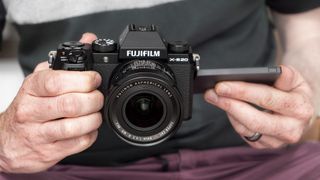
How to choose the best mirrorless camera
It's a great time to buy a mirrorless camera, but also a slightly overwhelming one. An explosion in the number of options available at all price points from the likes of Canon, Sony, Nikon, Fujifilm, Panasonic and a reborn Olympus (now known as OM System) means that photographers and videographers have never had more choice.
So where to start? Sensor size is often a good barometer of a camera's character and shooting style. Models that are built for professionals and keen amateurs will have either a full-frame sensor or a slightly smaller APS-C chip. The latter tend to be smaller and more affordable than full-frame cameras, if not quite as portable as those with Four Thirds sensors (from Panasonic and Olympus).
Other important features to look out for are electronic viewfinders (EVFs), which bump up the price but are nigh-on essential for most photographers. It's also worth considering what kind of lenses you'll need.
If you like to specialize in a particular area (for example, wide-angle architecture or macro), then check the system you're looking at to make sure it has the right options for you. In the full-frame mirrorless space, Sony offers the most choice right now, while on crop-sensor APS-C cameras Fujifilm has a wide range of options at most focal lengths.
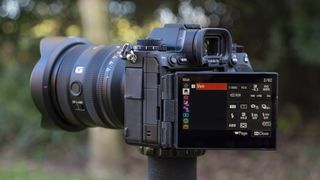
Mirrorless or DSLR: what's the difference?
The mirrorless vs DSLR debate has been a hot topic since the arrival of the first mirror-free cameras. Which is best for you will always be a personal choice, although most manufacturers are now focused on pouring their best tech into mirrorless models. Our dedicated mirrorless vs DSLR guide should help you decide which one is right for your needs, but there are a few key ways in which the two formats are different.
Mirrorless cameras allow you to change lenses like a DSLR. But unlike a DSLR, they don’t use a mirror to direct light onto the sensor inside. Instead, light is received and processed by the sensor directly. Because they don’t need a bulky mirror, they can be made more compact than a traditional DSLR. No mirror to move also means faster potential shutter speeds.
The other key difference is the viewfinder. Where DLSR cameras use an optical viewfinder to help you frame scenes, mirrorless cameras rely either on an electronic equivalent, or require you to compose using their rear screen. While the latter can be problematic in bright conditions, the former is no longer the dealbreaker it once was: modern EVFs are bright and sharp, giving you a realistic preview in real-time, with the benefit of data readouts.
Mirrorless cameras initially featured smaller sensors than DSLR cameras, but today you’ll find a catalogue of mirrorless models with full-frame and APS-C sensors. This means there’s no clear difference in image quality between the best DSLR and mirrorless cameras.
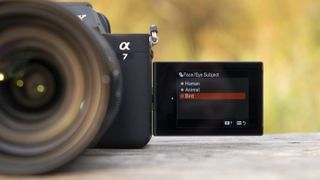
Why are mirrorless cameras better?
Is a mirrorless camera better than a DSLR? There are still quite a few pros and cons to both designs, so if you want to find out more, read our Mirrorless vs DSLR cameras guide.
Mirrorless cameras certainly offer more choice. If you're looking to buy a DSLR, there's only really two main players in the shape of Canon and Nikon. If you opt for a mirrorless camera, the choice of brands is much broader, with the likes of Canon, Panasonic, Fujifilm, Sony, Olympus and Leica all offering a wide range of cameras to suit most budgets.
Right now, every major camera manufacturer has something to shout about, and their latest models are different enough from their rivals to stand out in some way.
While it would be very easy to select 10 high-end models to make up our pick of the best mirrorless camera, we've tried to pick out some more affordable options as well. These models might not be dripping with features, but they represent great options for new users and those on a budget. That said, if you're looking specifically for a budget mirrorless camera, take a look at our best beginner mirrorless camera guide.
So whether you're after a better camera than the one featured on your smartphone or are looking for an advanced, high-end model to push your creativity even further, read on to find out what are the best mirrorless cameras you can buy right now.
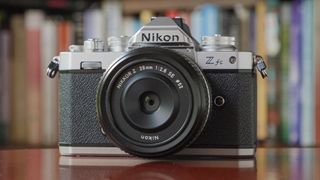
Are mirrorless cameras good for beginners?
While flagship mirrorless cameras might be designed to fulfil the needs of enthusiasts and professionals, the best entry-level mirrorless cameras offer everything a beginner could ask for at the start of their photography journey.
Many of our favorite beginner mirrorless cameras are lightweight and easy for learners to handle, while still offering the sort of performance that will allow you to grow as a photographer. The exact specs will vary from camera to camera, but the core components usually include a capable sensor and reliable autofocus.
Besides striking a balance between price and performance, most mirrorless cameras are user-friendly for beginners, thanks to their touchscreen interfaces. Even if you’re a complete novice, these should feel familiar if you’re upgrading from a smartphone.
By choosing a beginner mirrorless camera, you won’t generally get all of the more advanced features found on premium models. That sacrifice could be in-body image stabilization, burst shooting speeds, or perhaps the frame rate at which a camera can record 4K video footage. Still, mirrorless cameras remain a versatile choice for new photographers. And because their lenses are interchangeable, you’ll be able to upgrade to different glass as your skills improve.
We’ve picked out a handful of our favorite mirrorless starter cameras in the ‘Novices’ section above, but you can find an in-depth selection by reading our dedicated round-up of the best beginner mirrorless cameras. There you’ll find options for every budget and preference, ranging from the best entry-level all-rounders to video-focused mirrorless hybrids for budding vloggers.
Meet the team
Collectively, our team of reviewers has amassed over a hundred years of camera experience and testing, covering all of the latest and greatest cameras in the last 20 years.

As Cameras Editor, Tim looks after all cameras content on Tech Radar. This includes buying guides, opinions, reviews and news, and covers anything from mirrorless cameras to film and smartphones. He has been cutting his teeth in the photo and video industry for almost 20 years.

Mark is TechRadar's Senior news editor and has been a technology journalist since 2004. Formerly Trusted Reviews and TechRadar's cameras editor, Mark has tested cameras over many years from all of the leading brands.

Amy has been writing about cameras, photography and associated tech since 2009. Amy was once part of the photography testing team for Future Publishing working across TechRadar, Digital Camera, PhotoPlus, N Photo and Photography Week.

James Abbott is a professional photographer and freelance photography journalist. He contributes articles about photography, cameras and drones to a wide range of magazines and websites where he applies a wealth of experience to testing the latest photographic tech.

Jon Devo is a seasoned professional with 20 years of experience in photography and videography. After studying Journalism and Psychology at City University London in 2009, he transitioned into presenting and journalism. Jon is the founder of Devoted Creatives, a photo and video studio based in West London.

Richard Sibley is a photographer and writer passionate about travel and landscape photography. With over 15 years of experience writing and reviewing in the photo industry, he was formerly Deputy Editor at Amateur Photographer magazine and has had his words and images published in numerous other magazines and websites.
How we test mirrorless cameras
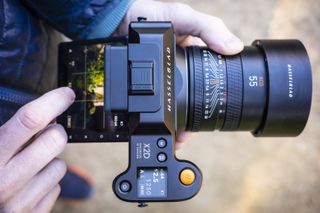
☑️ 100s of cameras reviewed
☑️ 15 years of product testing
☑️ Over 16,000 products reviewed in total
☑️ Nearly 200,000 hours testing tech
Buying a mirrorless camera these days isn't cheap, so every camera in this guide has been tested extensively by us. These days, real-world tests are the most revealing way to understand a camera's performance and character, so we focus heavily on those, along with standardized tests for factors like ISO performance.
To begin with, we look at the camera's design, handling and controls to get a sense of what kind of photographer it's aimed at and who might most enjoy shooting with it. When we take it out on a shoot, we'll use it both handheld and on a tripod to get a sense of where its strengths lie, and test its startup speed.
To test performance, we use a formatted memory card (the fastest supported type be it UHS-I, UHS-II, CFexpress A or B, and so on) and shoot in both raw and JPEG (if available). For continuity we use the same camera settings (1/250 sec, ISO 200, continuous AF) when testing the real performance of the camera's continuous high burst mode for high speed photography. We'll also look at how quickly the buffers clears and repeat the test for both raw and JPEG files.
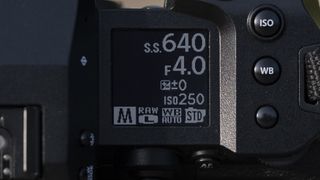
In various lighting conditions, we also test the camera's different autofocus modes (including Face and Eye AF) in single point, area and continuous modes. We also shoot a range of photos of different styles (portrait, landscape, low light, macro/close-up) in raw and JPEG to get a sense of metering and its sensor's ability to handle noise and resolve fine detail.
If the camera's raw files are supported by Adobe Camera Raw, we'll also process some test images to see how we can push areas like shadow recovery. And we'll also test its ISO performance across the whole range to get a sense of the levels we'd be happy to push the camera to.
Official CIPA ratings helpfully estimate the camera's expected battery life but the reality is often different – for better or worse – and so we run our own real-world tests, making sure the screen brightness is in its factory setting. Once the battery has reached zero, we'll then count the number of shots to see how it compares to the camera's CIPA rating. Finally, we test the camera's video skills by shooting some test footage at different frame-rates and resolutions, along with its companion app.
We then take everything we've learned about the camera and factor in its price to get a sense of the value-for-money it offers, before reaching our final verdict.
- Best cameras for photography
- Best camera for beginners
- Best beginner DSLR cameras
- Best DSLR
- Best 4K camera
- Best full-frame camera
- Best compact camera
- What camera should I buy?
- Mirrorless vs DSLR: 10 key differences
- Camera rumors
Get daily insight, inspiration and deals in your inbox
Sign up for breaking news, reviews, opinion, top tech deals, and more.

Tim is the Cameras editor at TechRadar. He has enjoyed more than 15 years in the photo video industry with most of those in the world of tech journalism. During his time as Deputy Technical Editor with Amateur Photographer, as a freelancer and consequently editor at Tech Radar, Tim has developed a deeply technical knowledge and practical experience with cameras, educating others through news, reviews and features. He’s also worked in video production for Studio 44 with clients including Canon, and volunteers his spare time to consult a non-profit, diverse stories team based in Nairobi. Tim is curious, a keen creative, avid footballer and runner, and moderate flat white drinker who has lived in Kenya and believes we have much to enjoy and learn from each other.
- Mark WilsonSenior news editor
- Chris Rowlands